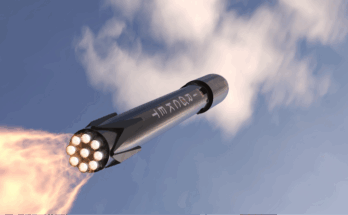A new open-source signals intelligence tool could help pilots and navigators avoid concentrations of GPS jamming.
Guest post by Dr. Thomas Withington
The jamming of satellite navigation signals is the scourge of the navigator. It is casually referred to as “GPS Jamming,” reflecting the preponderance of the United States’ Global Positioning System (GPS). However, it can affect any signals sent from satellites to aid navigation on the sea, on the ground, or in the air. The world has four Global Navigation Satellite Systems (GNSSs), as they are properly known. The GPS constellation shares space with the European Union’s Galileo, Russia’s GLONASS, and China’s Beidou. All these satellites transmit signals from the cosmos. By receiving three or more signals from disparate satellites, GNSS terminals calculate the location of the person, vehicle, aircraft or ship carrying them. It is no overstatement to say that the world relies on GNSS signals.
The Jamming Scourge
This reliance creates vulnerabilities that have been exploited in recent years, with GNSS signals being jammed. Jamming takes two forms: The signal is either blocked, or the signal is hacked and fed with false information. Thus, the user either receives no signal at all or receives a signal carrying misleading data.

Large-scale GNSS jamming was detected in and around the Syrian theater of operations following Russia’s intervention in that country’s civil war from 2015. Reports emerged in 2018 of jamming attacks on GPS signals in Syria against unmanned aerial vehicles (UAVs) used by U.S. forces deployed there. Similar reports noted that GNSS jamming had been detected from 2014 in the Ukraine theater of operations. Russia had invaded Ukraine and occupied its southern Crimea region in February of that year. Examples of GNSS jamming in Ukraine included attacks against UAVs flown by the Organization for Security and Cooperation in Europe. The OSCE had been tasked, in its own words, “to observe and report in an impartial and objective way on the situation in Ukraine; and to facilitate dialogue among all parties to the crisis.” The organization had deployed Schiebel CAMCOPTER S-100 UAVs to assist its mission.
Like aircraft, ships and vehicles, UAVs use GNSS signals for navigation. All GNSS signals are transmitted on frequencies of 1.1 gigahertz/GHz to 1.6 GHz. The problem for GNSS users is that the signals must travel thousands of miles from the satellites. Spacecraft are limited in how much power they can put behind the signal. This is because they are limited in the physical space available to accommodate the necessary power generation systems. As a result, GNSS signals can have a weak strength of under 50 watts by the time they reach Earth.
This low power level makes it relatively easy to “crowd out” the weak GNSS signal by transmitting a higher power, but false, jamming signal into the GNSS terminal. This jamming signal can either be simple noise, drowning out the real signal, or a seemingly correct GNSS signal hacked with false information. Either way, it is bad news.
The problem for anyone using GNSS is that, until now, ordinary civilians struggled to get information on where jamming was occurring so that it could be avoided. Fortunately, help is at hand. Incidences of GNSS jamming are now tracked and updated daily on the GPSJam map. The map is highly intuitive. A simple red, yellow and green color key depicts levels of GNSS interference on a given day. Green denotes zero to 2 percent interference, yellow shows 2 to 10 percent, and red depicts over 10 percent.
Where to Avoid?
It is perhaps not surprising that much of the red areas correlate with sensitive locations or regions gripped by war or crisis. A cursory glance of the map for August 8 shows incidences of significant GNSS jamming recorded in the eastern Mediterranean. Areas around Cyprus, Israel, Jordan, Lebanon, Syria and Turkey were particularly affected. Farther east, significant jamming was shown in the vicinity of Armenia and Azerbaijan, with areas to the south of Erbil, northern Iraq, similarly affected.
Culprits?
Where is the jamming coming from? Russian electronic warfare kit deployed in Syria has been blamed for some of the disruption suffered in and around the troubled country. The Russian Army’s R-330 Zhitel system can jam GNSS signals and other transmissions on a 100-MHz to 2-GHz waveband. The R-330 was deployed to support Russia’s intervention in Syria, primarily to jam GNSS-guided ordnance. This may have been the source of jamming signals experienced in and around the Syrian theater. Likewise, the Russian government is suspected of deploying GNSS jammers around strategic sites in Moscow. The GPSJam map does indeed show a high concentration of GNSS jamming in Moscow and its environs. it is little surprise that strategically important military facilities in and around Murmansk in Russia’s arctic show high incidences of GNSS disruption.
Sources
The map sources its information from reports of GNSS jamming disruption compiled from the Automatic Dependent Surveillance Broadcast (ADS-B) system. ADS-B is used by aircraft to share details of their flight and identity with air traffic controllers. Information on the aircraft’s location at any given moment is derived from the aircraft’s GNSS receiver. If that GNSS receiver experiences disruption to its signal, the ADS-B information could be corrupted.

John Wiseman, the creator of GPSJam, sources the ADS-B data from the adsbexchange.com website. This has raw values for ADS-B navigation uncertainty potentially caused by GPS jamming. The “ADS-B Exchange also does some light processing where it flags an aircraft with ‘bad GPS,’” says Mr. Wiseman. Moreover, the website “tries to filter out aircraft that just have broken equipment or one bad data point” in their ADS-B data.
For now, the map only includes examples of disruption to GPS signals, as they are the ones used by ADS-B. That said, as GPS is probably the most used GNSS, the map’s data has utility beyond the aviation community. There are some parts on the map that appear to suffer no GPS disruption, but are known to experience GPS outages. For example, there are no details on GNSS jamming over Ukraine and the Black Sea, despite this being reported. This lack of information is the result of Ukraine being closed to international civil aviation. If aircraft are lacking ADS-B systems when flying over particular areas, they will not necessarily record any GPS disruption.
The GPSJam map is a significant open-source addition to our understanding of GNSS jamming. The information will be useful to navigators – particularly for pilots, who can modify their routes to avoid disruption. Researchers can now plot GPS disruption over prolonged periods to ascertain trends and improve the forensics regarding who might be responsible. In fact, Mr. Wiseman says that he would “like to add an easier way to view trends, changes and anomalies over time.” So-called Citizen’s SIGINT (signals intelligence) is growing in popularity and utility. John Wiseman’s map is a major contribution to this end.
Dr. Thomas Withington is an award-winning analyst and writer specialising in electronic warfare, radar and military communications. He has written widely on these subjects for a range of specialist and general publications. He also works as a consultant and adviser in these areas for several leading government and private sector clients. Furthermore, Dr. Withington provides regular commentary on security and defence aspects of electromagnetic spectrum use for major media organisations around the world. @tomwithington
For 50 years, Forecast International intelligence reports have been the aerospace and defense industry standard for accurate research, analysis, and projections. Our experienced analysts compile, evaluate, and present accurate data for decision makers. FI's market research reports offer concise analysis of individual programs and identify market opportunities. Each report includes a program overview, detailed statistics, recent developments and a competitive analysis, culminating in production forecasts spanning 10 or 15 years. Let our market intelligence reports be a key part of reducing uncertainties and mastering your specific market and its growth potential. Find out more at www.forecastinternational.com



